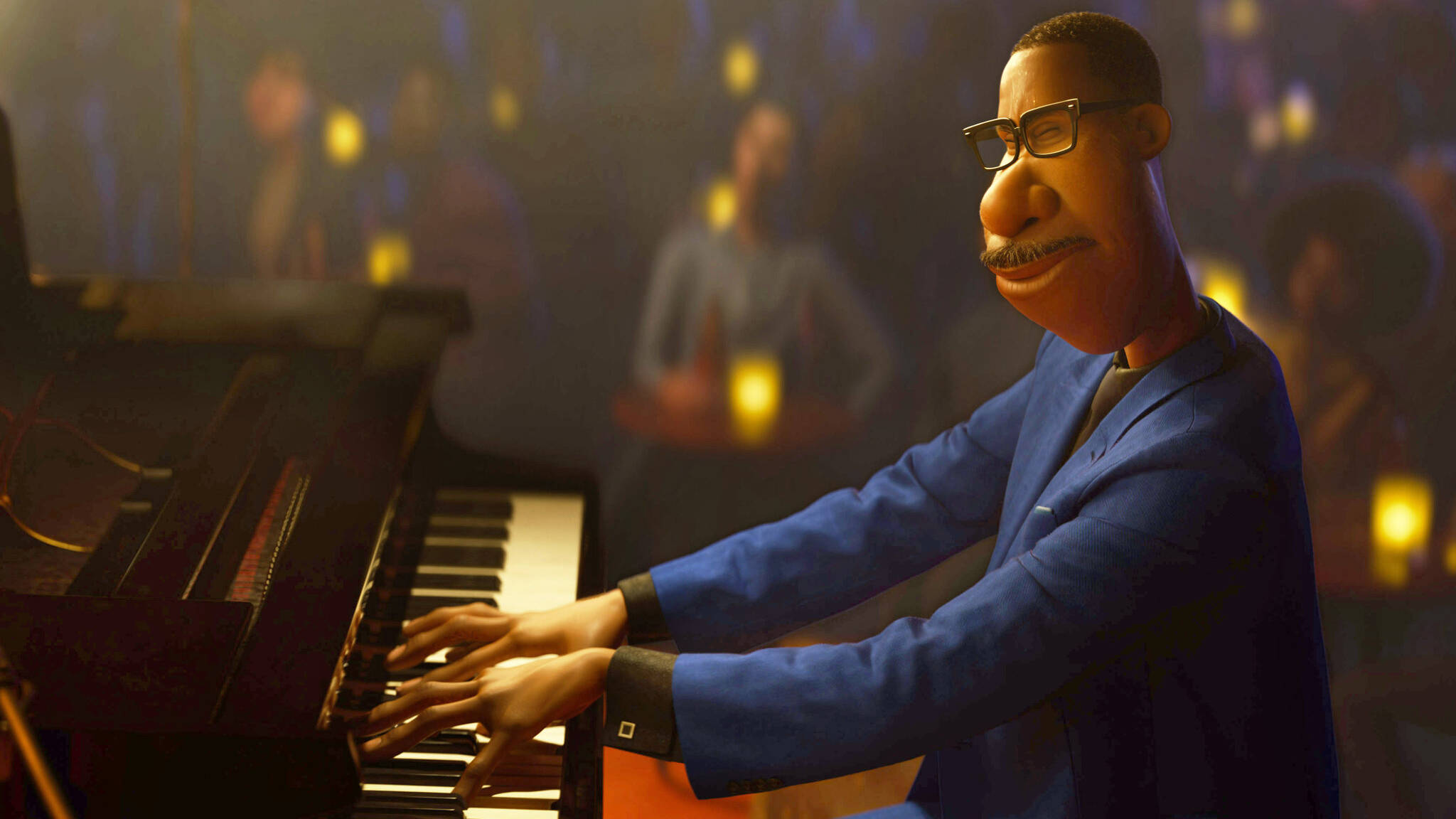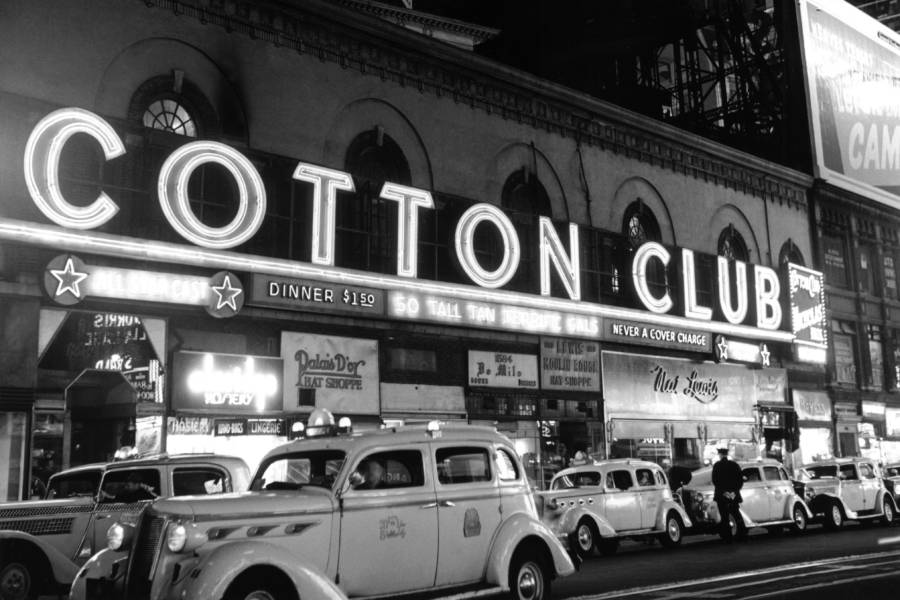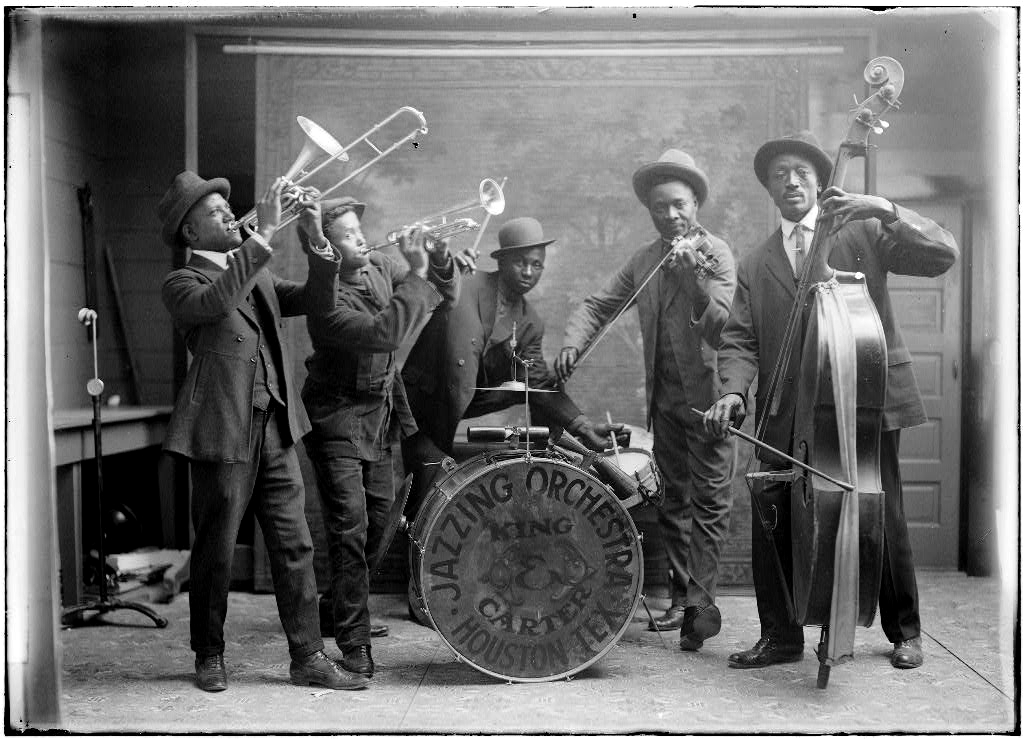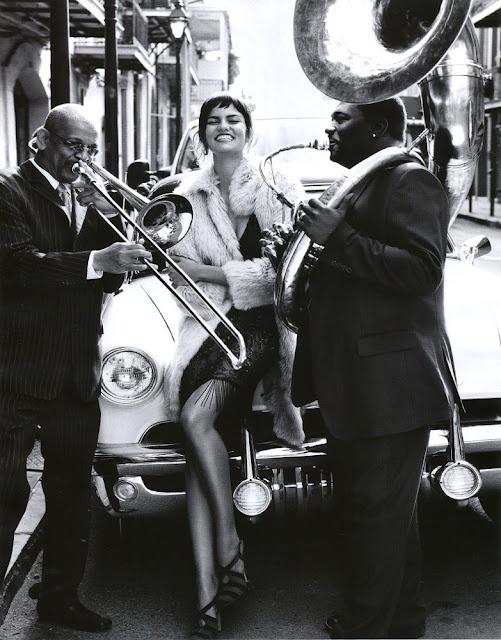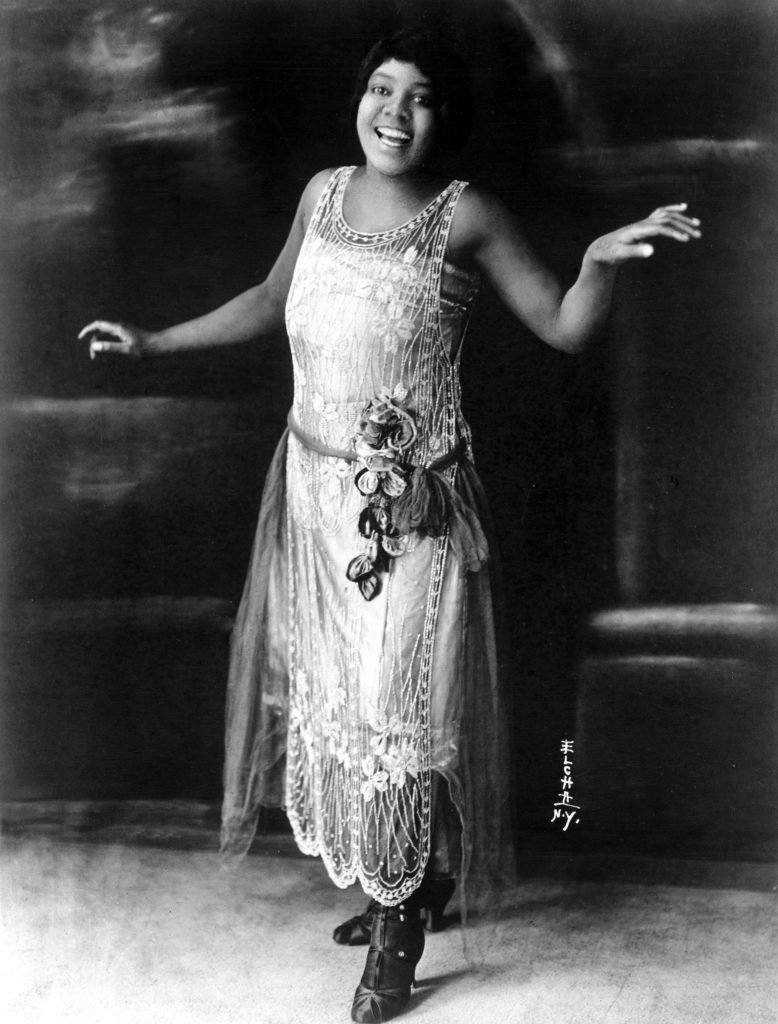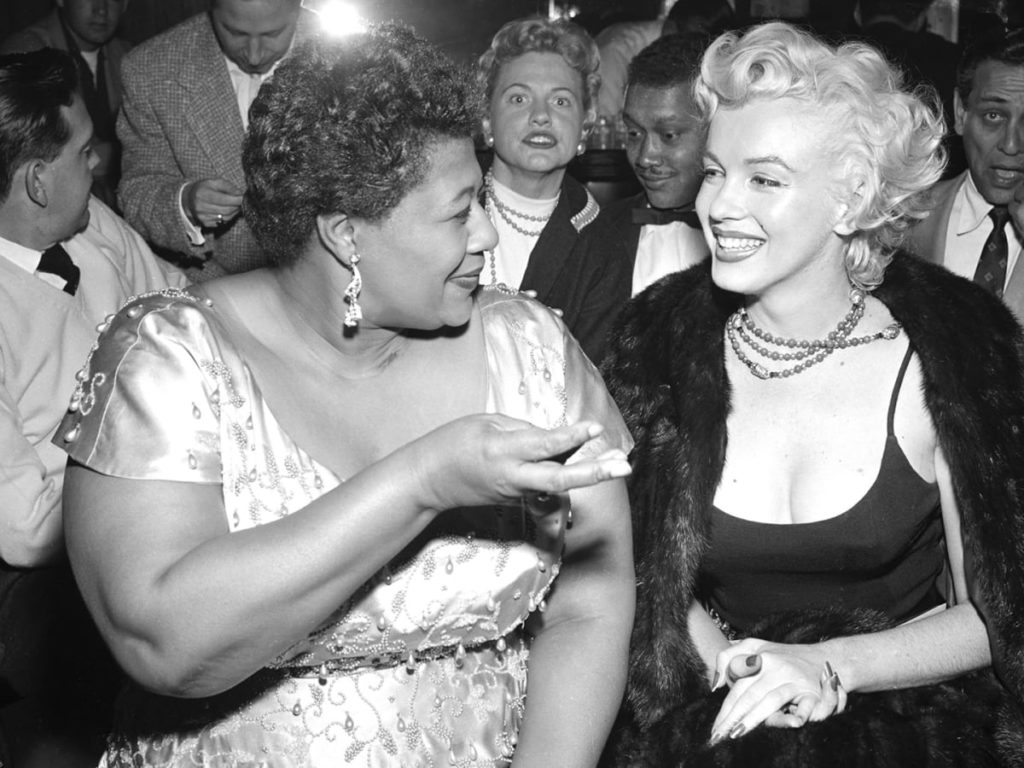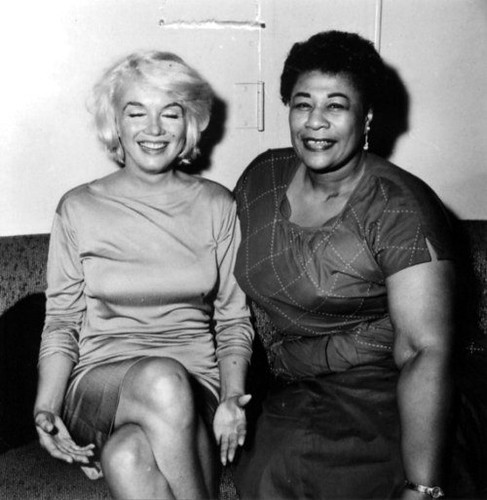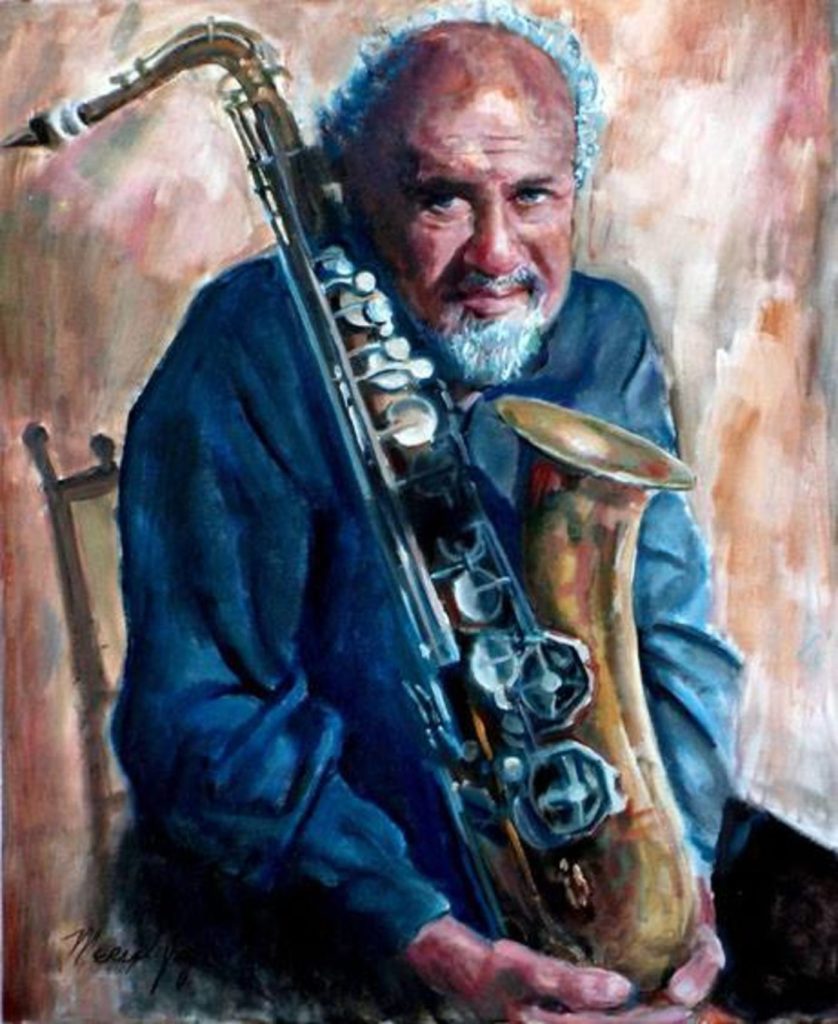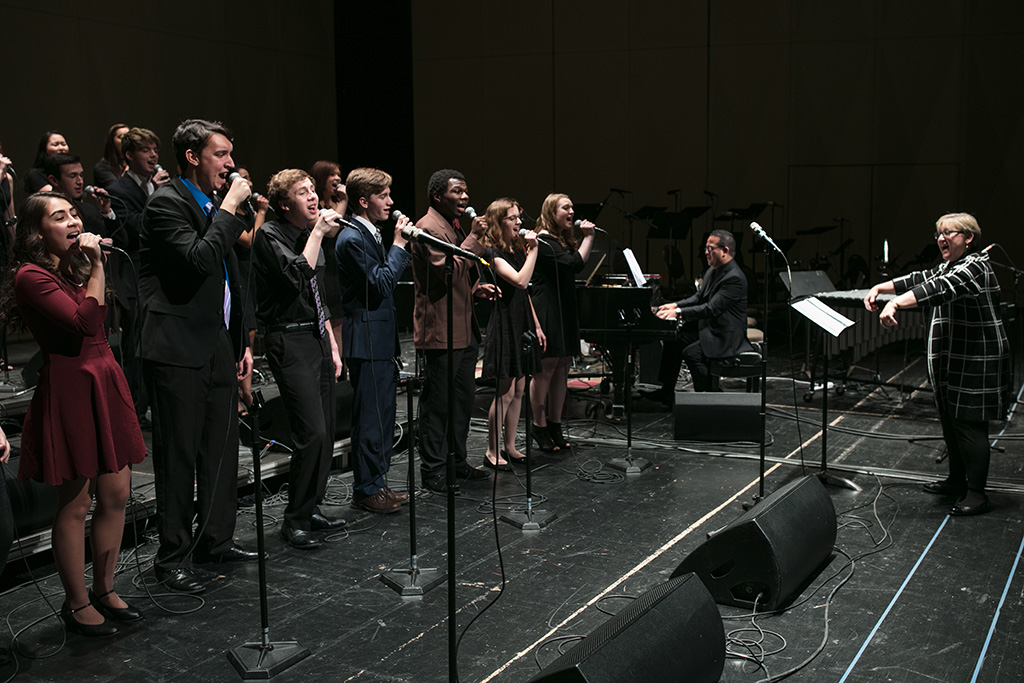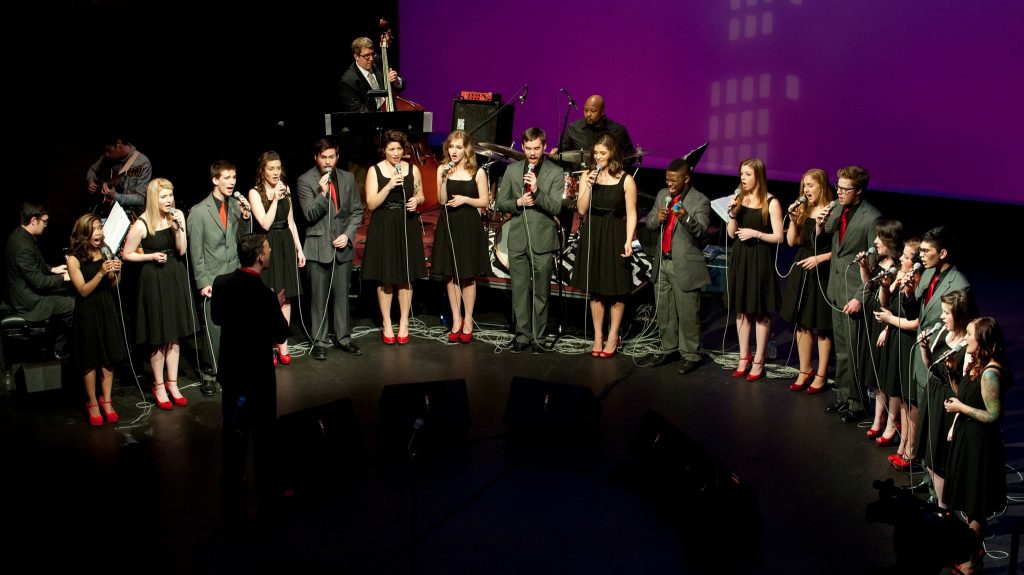Jazz is a kind of music that is favored by musicians by its allowance to express emotion, the spontaneous composition of melodies, and the harmony of a song. Since its appearance, Jazz has carried out its story about race, race relations, racial tension but at the same time racial harmony. Jazz includes specific aspects such as extemporization (improvisation), the use of polyrhythm (polyrhythm), syncopation (displacement), and Swing, Blues notes.
Today, Jazz is considered a non-popular music genre, but its roots tell a different story. A combination of African-American music originating in the 1900s (Ragtime) with a part of European chamber music. Blues Jazz exploded into the American music scene in the 1920s and was called the “Jazz Age” by F. Scott Fitzgerald.
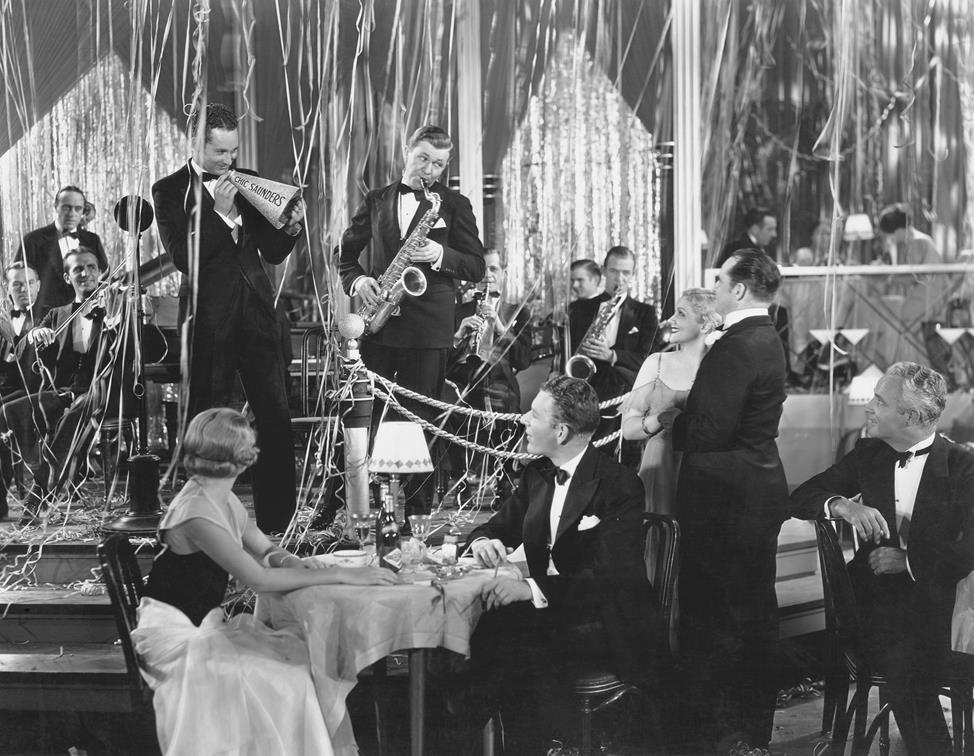
1920 – 1930 marks the 10 years of economical golden years of America. After World War I, the United States became the most powerful country in the world. The economy flourished, the stock market rose brilliantly. The economic surplus more than doubled from 1920 to 1929, sending a large portion of Americans into an affluent and luxurious lifestyle. A generation of “New Money” was born and accompanied by a large number of people who dreamed of an American dream and moved to New York – the heart of the US stock market. And in such big cities, a new popular culture flourishes, called the “Mass culture”.
Thanks to the advent and popularity of cars and radios, people are now able to get closer to each other than ever before. They can go anywhere they want, listen to the same music on the radio or dance the same dance. The dance floors are lit up, the parties seem to never end. Party, freedom, liberation. What’s the point of thinking about the future when today is already great? That is when Jazz comes in and dominates the music industry with its soothing melody.
Enjoy Life, Enjoy Every Minute Of Your Existence
More often than not when talking about the glorious past of Jazz, you will immediately think of the magnificent scenery of New York in the 1920s – the peak of the Jazz Age. But did you know, New York is actually not the birthplace of Jazz, but New Orleans – Louisiana? These two cities are almost 1500 miles apart!
Jazz was, at the time, like a maze of impromptu combinations, between different cultures and time periods, all brought together by music. This orderly chaos comes from the cotton plantations, labor songs in the streets, gatherings, parades, and mass dances, then culminating when the two prominent music genres, Blues and Ragtime, boomed in America. Blues later became a separate music genre, performed by pianists and guitarists. Ragtime is piano-oriented, well-composed, and full of notation. Interestingly enough, the way it’s played between the two musical genres is very much similar but with little change, quite similar to classical music.
Jazz, on the other hand, still has its own rules of rhythm and harmony among instruments, the solo part which honors the artist’s talent, but the note played on stage is not clearly noted or documented, everything is purely random improvisation. Jazz needs the creativity, performance instinct, and musical sensibility of the artists playing it on stage. They do what they want on stage, not in a chaotic manner, but very rhythmically.
It will be a bit difficult to understand improvisation in Jazz music for new listeners. Although it sounds like freedom, in fact, that freedom is still being conducted within a transparent law. Before performing, the band will harmonize the instruments and create a mainframe. From there, based on the main melody and harmony, the performer will improvise the notes and harmonize the rhythm. Each instrument will have a solo play, which is when they will most clearly show their individuality. In addition, the artists will change the original rhythm. To refresh the music, they will shift the emphasis of the beat, from the strong beat to the weak beat, creating a sense of surprise for the listener.
Jazz is a movement that doesn’t stop, Jazz combines with Latin music to give birth to Bossa Nova. Jazz combined with music in Europe to create Gypsy Jazz, then Bebop, Hard Bop, Cool jazz, Modal jazz, Free Jazz, Jazz Fusion. Lots of combinations, lots of movements, refreshing itself non-stop and creating non-stop wonderful, upbeat beats that tuggle your heartstring whenever you go.
We are like jazz musicians, dancing back and forth between life’s chords, trying not to get out of rhythm, not ending at a low note, but still enjoying life, enjoying every minute of our existence.
Life is basically like that, isn’t it? It is always fluctuating, full of surprises, sometimes interesting, sometimes shocking. We are like jazz musicians, dancing back and forth between life’s chords, trying not to get out of rhythm, not ending at a low note, but still enjoying life, enjoying every minute of our existence.
I Sing Like I Feel
Did you know that currently on Spotify, Ella Fitzgerald’s songs are still streamed more than 10 million times per month? Why does Ella Fitzgerald’s music have so much enticement, even though decades have passed since the Queen of Jazz last sang her song on stage?
Just listen to Ella Fitzgerald sing, and you’ll see there are people in this world who have the ability to pack charm and fascination into their voices, and then when they sing, we’re all blown away. With a very wide vocal range, 3-octave vocals, and the ability to constantly improvise with different genres from bustling folk-pop, soft ballads, or even quiet jazz. She is the queen of Jazz improvisation, and also the number one talent in scat singing – when the artist uses their voice as an instrument, creating distinctive sound for the song.
However, behind the dazzling limelight, very few people know how turbulent Ella Fitzgerald’s career was before she became the legend she is today. Ella was born on April 25, 1917, in an impoverished family, her father drove a forklift, and her mother worked as a laundry worker. Her parents did not register their marriage officially and soon got separated after Ella was born. Afterward, she and her mother moved to live with her stepfather in New York. She then lost her mother at the age of 14, dropped out of school, moved in with her aunt, and got a job as a caretaker in a brothel. When the social guardian discovered this, Ella was sent to a shelter for children. But she soon escaped from there, and for a while, was forced to live on the streets.
Miraculously, music appeared, and it warmed all the wounds there were in her heart. Ella came to music by chance and was fortunate to have the opportunity to perform in a singing event for amateur artists, held at the Apollo Theatre. At first, she planned to compete with a dance performance but was threatened by the Edwards sisters – the famous local dancers, so at the last minute, she switched to singing. Unexpectedly, the two songs that she performed that day, Judy and The Object Of My Affection had helped Ella win her first prize with $25.
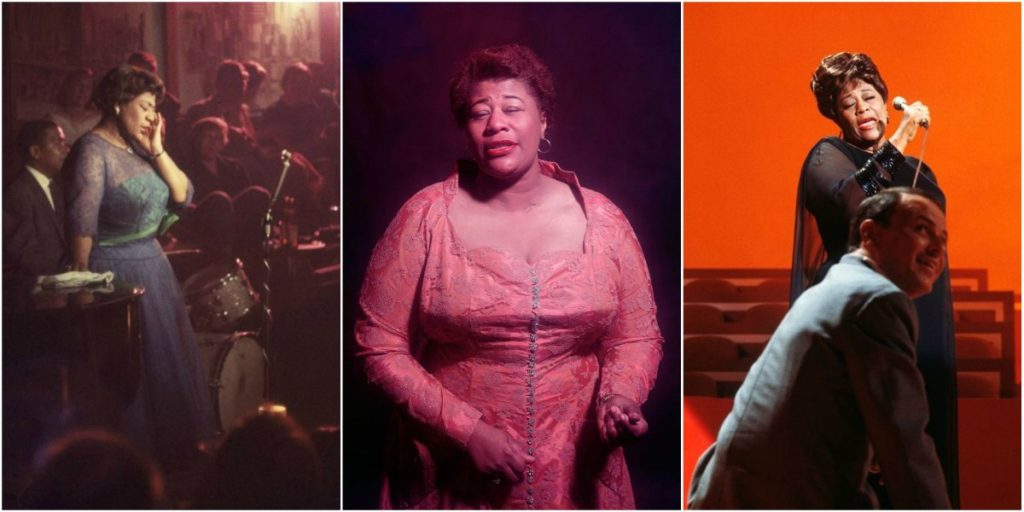
She then went on to win a contest and was chosen to perform with Tiny Bradshaw’s band, for a week, at the Harlem Theatre. People were reluctant to sign her the contract because at that time Ella looked dozy and scruffy, like a true “diamond in the rough”. Ella back then was 18 years old, with an unattractive appearance, was extremely embarrassed, and awkward when standing among all the attractive blondes on stage. But as soon as she started singing, everyone went completely silent.
I’m very shy, and I shy away from people. But the moment I hit the stage, it’s a different feeling. I get the nerve from somewhere; maybe it’s because it’s something I love to do.
Ella Fitzgerald
“I’m very shy, and I shy away from people. But the moment I hit the stage, it’s a different feeling. I get the nerve from somewhere; maybe it’s because it’s something I love to do.” She shared her words later in an interview. And just like that, with her talent and musical sensitivity, Ella Fitzgerald conquered one peak after another, capturing the hearts of fans around the world. “I sing like I feel” is the secret for the Queen of Jazz to succeed in capturing our hearts. This raises a question, do the lyrics need to be sung from the depths of one’s heart to reach the listener’s heart? As always, you as an audience, have to figure the answer to that question yourself by experimenting.
It Don’t Mean The Thing If It Ain’t Got That Swing
If you mention Jazz to anyone, most certainly the melody that pops into their mind most of the time will be Swing Jazz.
Swing Jazz was a popular musical form in the US in the 1930s – 1940s, following the boom of the Jazz Standard in the 1920s. Swing bands often have a large number of soloists, improvising based on the original melody of the song. It represents freedom, as opposed to the framework of fixed beats. Swing’s melody is improvised, indefinable, and difficult to pick up the note accurately. Swing Jazz dominated American music from 1935 to 1946, a period also known as the Swing Era. The Swing Era is located in between two major historical events, The Great Depression of 1929 and World War 2 (World War II). Therefore, Swing’s liberal freedom is a rebellious declaration, liberating people from their difficult, harsh reality of unemployment and the constant melancholy of war at that time.
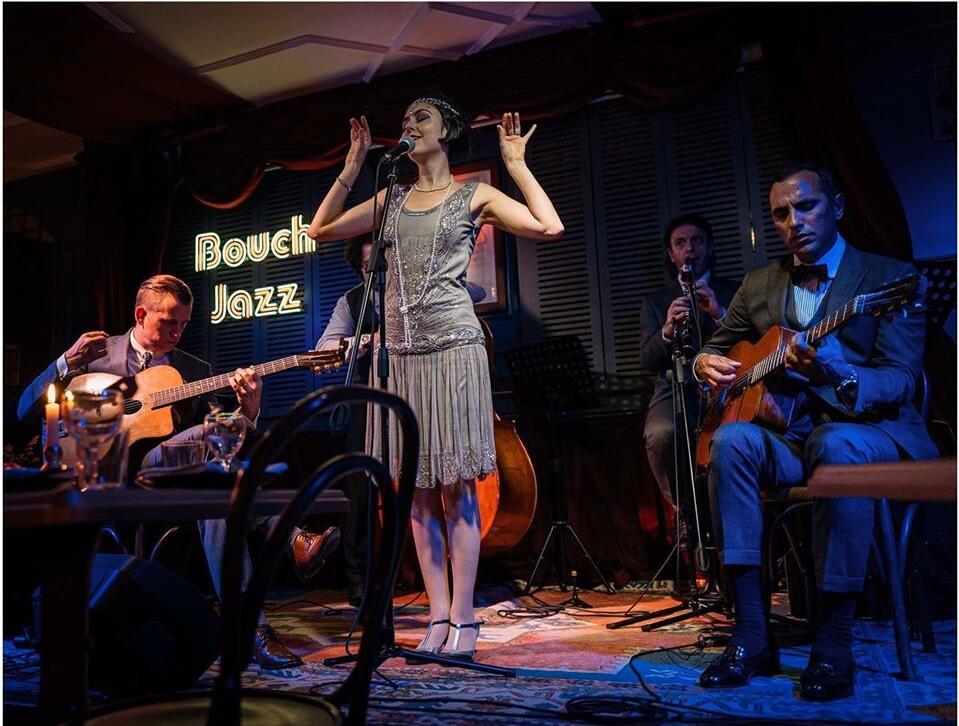
One of the prominent artists of the Swing Era is Duke Ellington, he was the bandleader at the legendary nightclub Cotton Club in New York. With thousands of musical works in his career and more than 50 years of relentless creativity, Ellington is considered the greatest Swing Jazz musician of all time. And beyond Jazz, he defines his music as a free-American, rebellious, filled with the fresh air of the modern time, of everyday life, of African-American life in a still-heavy divided society, class divisions, and racism in the 1930s.
With the outbreak of World War 2 (World War II), American bands could not perform at other venues besides their city, along with the arrival of the Cabaret Tax, which was up to 30%, musicians could not hold on to their passion financially and Swing Jazz gradually disappeared. However, Swing Jazz has left a great influence on the music scene in general, and specifically with one major influence that paved the way for the next trend in America’s music industry: Cool Jazz.
Keeping It Cool With Cool Jazz
After World War II, amidst the excitement, passion, and complexity of bebop, another branch of Jazz also emerged to the scene – Cool Jazz – gentle, deep, mellow but full of introspection.
The beauty of Jazz is its limitless possibilities for growth, allowing artists to explore new ways of experimenting and incorporating new musical concepts. With the introduction of Jazz trio, Jazz quartet, Cool Jazz is a combination of Jazz and chamber music arranged in a harmonious way before performing (Jazz meets Classic). Miles Davis, The Modern Jazz Quartet, Gerry Mulligan, and Lennie Tristano’s music are the perfect representative of the Cool Jazz area. Its musical colors are likened to gentle “pastel” colors, in vast contrary to the warm and bright tones of bebop. Lessor or slower-paced with the vibratos, the improvisation is also being implemented much more, all combined with the sound of many instruments together to create a harmonious, mellow, and expressive sound, almost feeling like you are listening to a storyteller. However, in this musical style, there are also some certain differences between the light melody of Los Angeles, represented by Saxophonist Dave Pell and the complexity and variation of New York, represented by pianist Lennie Tristano.
Bebop, with its complexity and intense emotion, did not receive as much audience support as it did during the earlier heyday of Standard and Swing Jazz. And Cool Jazz is what brings Jazz back to the music scene for the majority of audiences. After the war, Americans, with all of their uncertainty and worries about the future, came to Cool Jazz to have a more gentle, introspective, and contemplative thought in life. “Keeping it cool”, which comes from the slang of military pilots, has gradually become a common slogan for people in their everyday life, amidst the escalating tensions caused by the cold war and the threat of mass destruction by nuclear weapons.
Music in particular or art, in general, is always a kaleidoscope that reflects our society in the most authentic and vivid way.
Music in particular or art, in general, is always a kaleidoscope that reflects our society in the most authentic and vivid way.
Are You Vocally Ready For Vocal Jazz?
Throughout the development of Jazz, Instrumental Jazz has always held a place in the hearts of 20th-century American music lovers. However, as singers became more creative and broke more boundaries, a new way of singing was born, called “scat singing”.
Vocal Jazz emerged in 1942 when musicians were suddenly banned from performing in the public. Singers – who had never been considered a musician at the time, were still free to perform, and soon, their music track became popular. Jazz singers such as Don Redman, Cliff Edwards, Red Nichols, Louis Armstrong, Ella Fitzgerald then came on stage with their powerful voices, improvised vocals, and smooth rhythmic transitions. Jazz was now widespread worldwide in the 1940s and singers started to form bands together, while Acapella gradually became popular with the mixing of different Jazz vocals. Two of the most famous Jazz Singers at that time are Billie Holiday and Ella Fitzgerald. Holiday found herself in direct competition with the popular singer Ella Fitzgerald, but the two later became friends.
Jazz may not be as rigorous as classical music, but it has a very specific level of expression. It takes great skill and special musical ability to sing Vocal Jazz. Every singer must have the perfect match in terms of volume, reverberation, and timbre to be able to become a member of a Vocal Jazz band. More than simply good performing, each member needs to listen attentively to the melody as well as harmonize with each other symphonically, like a puzzle piece in the complete musical picture of the band.
The Charm Comes From The Original
Jazz’s influence and popularity faded quickly. In the 1960s, jazz’s complexity grew, making it difficult to approach for most audiences. Rock music began to develop in the 1970s and gradually attracted the attention of the audience. But even so, Jazz has never lost its continuance, despite the changing tastes of the mass audience. There are still artists who are passionate about Jazz, who are always exploring, discovering, developing Jazz, and shining in their very own ways.
Jazz is freedom in expression, and in performance. Jazz has no framework, no restrictive rules. Jazz is a celebration of the artist’s individualism. And for young artists, Jazz is not the glory of the past but a representative of a present full of life, full of youth, and an endless source of creative inspiration. The story of ourselves, our everyday honest and unpretentious emotions, like the narrative of our own story.
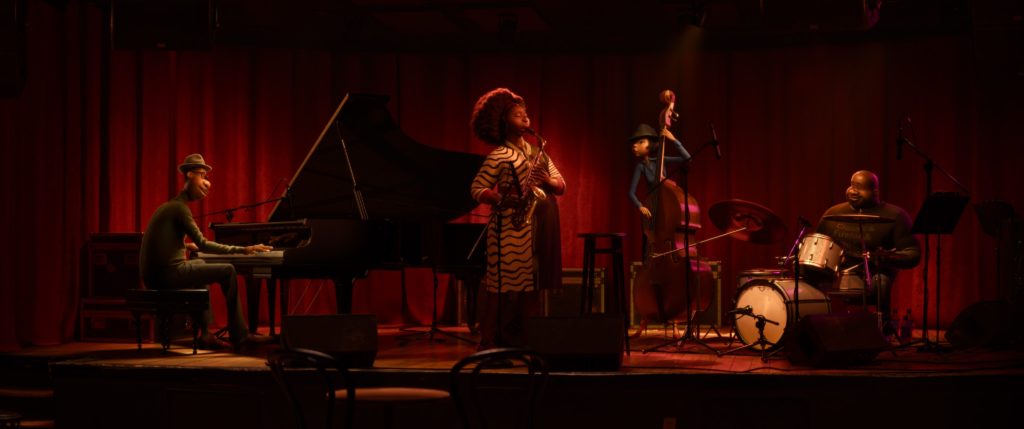
And that’s how Jazz was created in the African American community, on stages where they were free to express themselves, where they were liberated from injustice and gained the freedom to create, to perform, to serve and to give.
Jazz is life, and whoever lives their life to the fullest is a brilliant Jazz musician.
Jazz is life, and whoever lives their life to the fullest is a brilliant Jazz musician. More than just emotions, it is the music of reason, with a history of growing up and dealing with different problems from different sides of society. Jazz wants to bring you the most original, most pure, unmixed, undiluted musical materials it has. It might be a little hard to listen to at first, even confusing, but I believe that if you let yourself go, you’ll get lost in the artist’s transformative improvisational solos, vocally perfect concert, and make you fall in love with it without you even knowing.

Because after all, what is more original than the emotions that you feel from the bottom of your heart?
IVolunteer International is a 501(c)3 tech-nonprofit registered in the United States with operations worldwide. Using a location-based mobile application, we mobilize volunteers to take action in their local communities. Our vision is creating 7-billion volunteers. We are an internationally recognized nonprofit organization and is also a Civil Society Associated with the United Nations Department of Global Communications. Visit our profiles on Guidestar, Greatnonprofits, and FastForward.
